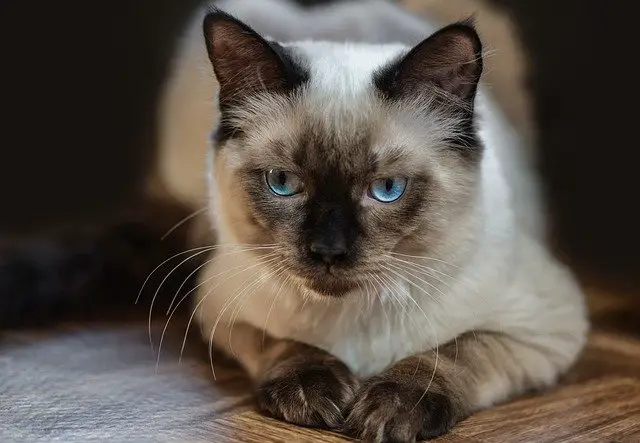The Ragdoll breed is relatively new in terms of the established cat breeds. Still, its affectionate and gentle nature makes it one of the fastest-growing in popularity, judging by Cat Fanciers’ Association (CFA) registration numbers. The Ragdoll is winning hearts even in the UK, where the breed is growing exponentially in the International Cat Association (ICA). With all this acclaim, you might ask yourself, what makes Ragdolls so popular?
Ragdoll cats are good pets because they are incredibly affectionate to humans and friendly to strangers. They are one of the least aggressive cat breeds to humans and other cats. They also have a low prey drive for birds and are unlikely to scratch furniture. They are gentle cats who thrive on love.
The Ragdoll was bred specifically for its docile, curious, and loving nature, and Anne Baker certainly created a unique and wonderful cat breed. Insatiable socialites, Ragdolls focus on their loved humans in a way that not many breeds can ever match. Here’s why the next cat you choose should be a Ragdoll and why Ragdolls make such good pets.
Gentle Temperament
Anne baker bred this unique breed with a domestic longhair she adopted from free-roaming in her neighborhood in California in the 1960s. She then bred this cat (called Josephine) with her other cats and created a breed with an endearing and gentle nature.
Using a number of Persians and Burmese, Baker focussed on breeding from the most docile and affectionate of the original offspring until she created a cat breed that loved being handled so much that they literally fell limp like a Ragdoll in their owner’s arms.
The slow-maturing Ragdoll shows significantly more interest in their human companions than most other cat breeds. They thrive on physical contact with their humans and shadow their owners around the home. Some owners have even taught this darling breed to play fetch, and Ragdolls love to greet their humans at the front door when they get home.
Low Aggression Levels to Human and Other Cats
Benjamin L. Hart, DVM, Ph.D., and Lynette A. Hart, Ph.D. wrote an excellent book called “Your Ideal Cat: Insights into Breed and Gender Differences in Cat Behavior.” in their extensive study on cat breeds, the Harts consulted over eighty top veterinarians specializing in feline practice to contribute towards their breed analysis. The Ragdoll showed up strongly against other breeds in the following categories.
Aggression to Humans and Other Cats
The Ragdoll ranked last in the analysis of several cat breeds regarding aggression to humans and animals. The sweet and even-tempered Ragdoll is curious and affectionate to most creatures, including dogs (which sometimes puts them in danger). Even in play, the Ragdoll keeps their claws gently sheathed to protect their playmates and owners.
Fearfulness of Strangers
The highly affectionate Ragdoll extends their affection to visitors and strangers alike and exhibits one of the lowest fear responses to meeting someone new. In fact, you will often struggle to keep your Ragdoll from climbing on your visitor’s laps! People with cat allergies should know that a Ragdoll home is not the best place to visit.
Least Likely To Urine Mark
In “Your Ideal Cat…” the Harts list the Ragdoll as one of the least likely breeds to indulge in spraying and scent marking behaviors in the home. Spraying can be a smelly nuisance and mark your walls and furniture. Third, from the bottom of the spraying list, the Ragdoll stands in direct contrast with those naughty DSH, DLH, Persian, and Siamese!
Affection to Humans
The Hart’s list the Ragdoll 10/10 top of the scale when it comes to affection for humans. Ragdolls will follow their owner from room to room and often drape themselves across their laps if they sit still enough for a moment. Sociable to the highest degree, Ragdolls live to be cuddled and held by their humans.
Furniture Scratching
Ragdolls are not keen climbers and tend to stay close to the ground more than other breeds. They are moderately playful but tend to play without extending their claws. This breed is one of the least likely to shred your lounge sofa in Hart’s list. The only cats that beat them to the top rank were the Persian, Sphynx, and Cornish Rex.
Laid Back Personality
Ragdolls are moderately playful and only moderately active, making them a more quiet and laid-back companion in the home. In Hart’s study of the different cat breeds, they are also only moderately vocal and have one of the lowest songbird predation drives. For owners who also love their garden birds, the Ragdoll is a perfect fit.
Good Litterbox Hygiene
Unlike some other established cat breeds, the Ragdoll ranks relatively high on litterbox hygiene and is unlikely to do its business outside the allocated areas. The Hart’s rank them in the top half of cats breeds to use their litterbox consistently, making a big difference in an apartment scenario.
Watch out for the Tonkinese, Burmese, Siamese, and Domestic Short Hair DSH) who ranked the worst for ‘accidents’ outside the litter zone!
Closing Thoughts
If you seek a cat companion who will give you an endless supply of gentle affection, the Ragdoll is definitely the top choice. Their curious and friendly natures are sometimes to their detriment, as they want to make friends with the world (including dogs!). Ragdolls are a perfect fit for homes where there is always someone around to cuddle.
[su_box title=”Affiliate Disclosure”]This website is supported by its readers. Please assume that all links are affiliate links. If you make a purchase from one of the links we will make a commission from Amazon. Thank you.[/su_box]




